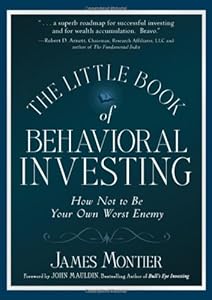Volatility Equals Opportunity
In Chapter 7 of The Little Book of Behavioral Investing: How not to be your worst enemy, James Montier builds on the lesson he shares with us in Chapter 6. In the previous chapter, he exposed our compulsive fondness for unwarranted information – a trait that does nothing to improve the accuracy of our decision making capabilities but assuredly boosts our self-confidence. In this chapter, Montier talks of the futility of forecasting or even understanding market ups and downs on the basis of media noise; stuff he calls “placebic” information.
And what is placebic information? It’s data that’s banal, irrelevant, neither here nor there. Yet, it packs enough horsepower to push the majority of people into doing what you want them to do. Salespersons, financial analysts and experts, weathermen and even doctors are adept in the art of delivering placebic information to drive desired actions.
You wake up your sleeping friend to tell him he was sleeping. That’s placebic information that could also get you hurt. Montier gives the classic example of the queue at the Xerox machine. People managed to jump the line 60% of the times by simply asking to use the Xerox machines. The compliance rate jumped to 90% when placebic information was provided, “Excuse me, I have five pages. May I use the Xerox machine, because I have to make copies?” Wow! That’s how easy it is!
On a side, I’m sure this experiment was conducted on American subjects because I just can’t see this excuse washing in India. The person who tries that trick will probably get an earful with a few choice words!
Of course, if the backdrop was an office like in Montier’s second example, the behavior pattern would change completely, and conform to the experiment’s results to perfection. When a memo with absolutely pointless information and an instruction was delivered to secretaries in an office, all of them obeyed the command mindlessly. Frankly, I believe about 80% office workers would do the same. As Montier says, when information is delivered in a fashion we’re familiar with, we tend to follow it without conscious thought.
The same thing happens when we listen to the jabber of financial experts on various media channels. Though no one from this group of intellectuals has ever managed to forecast any of the economic downturns witnessed in the last few decades, we still follow their words with rapt attention.
In a 1989 paper co-authored by Larry Summers that explored the 50 largest moves in the U.S. stock market between 1947 and 1987, it was found that:
- On most sizable return days, the cause cited by press was not important.
- Previous as well as subsequent press reports could not explain why market changes really happened.
Here’s a fact that every investor must come to accept: Price volatility is an essential ingredient of the market. It cannot be accurately forecasted or captured however much financial wizards keep trying. The winners are those who capture the opportunities created by market fluctuations and have the gumption to stick with their investment plan at a time of uncertainty and free-flowing advice.
When John Pierpont Morgan was asked what the stock market will do, he is quoted to have said “It will fluctuate.” Truer words have never been spoken.
So you get the trick? Cut off that media noise and plug placebic gobbledygook for good.
Monica Samuel is doing a chapter-wise review of the book: The Little Book of Behavioral Investing: How not to be your worst enemy by James Montier. You can follow the series by following this tag: tlbbinvesting or by subscribing to this rss feed: tlbbifeed






